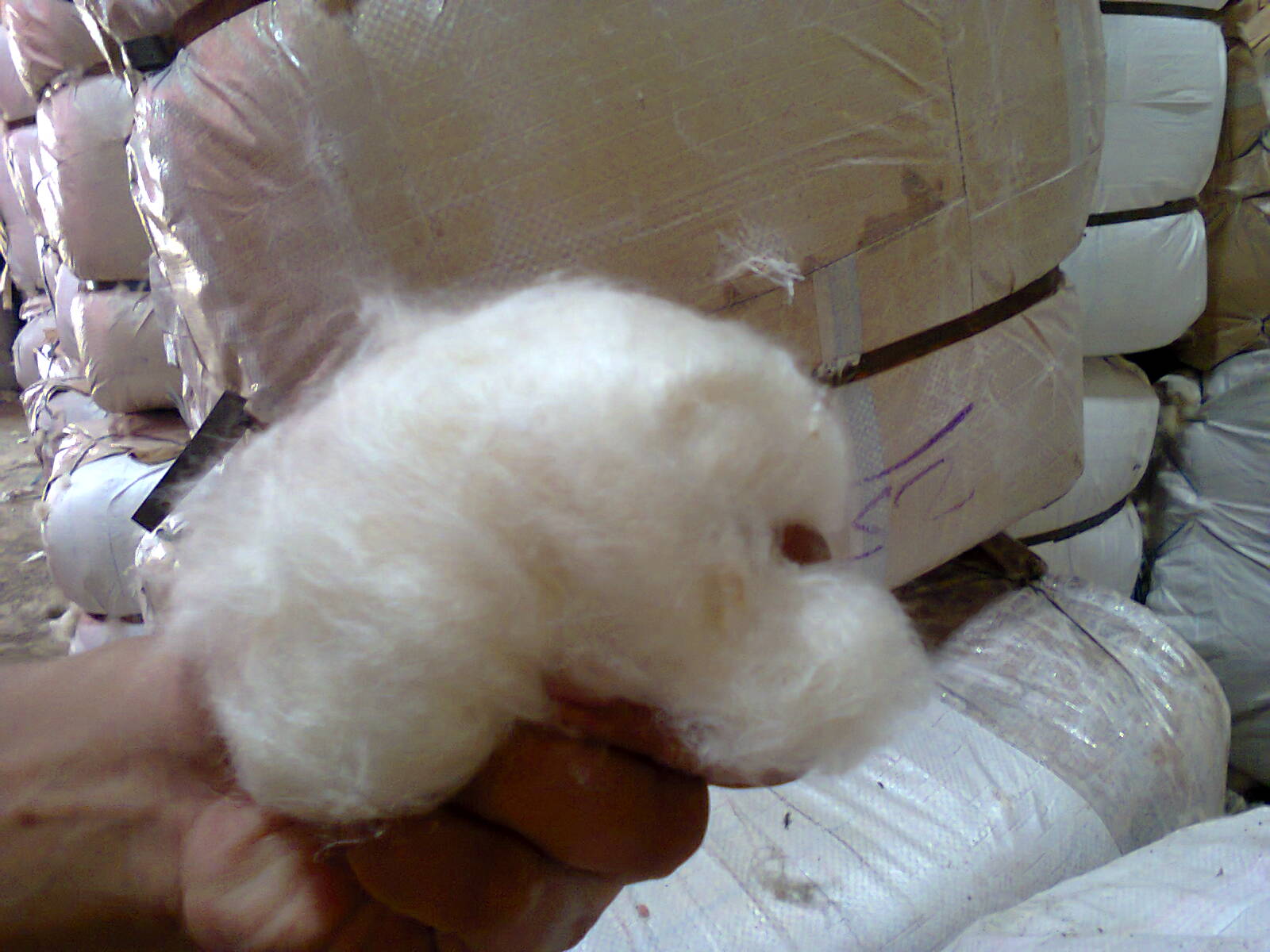Kapok fibres are lustrous, yellowish brown and made of a mix of lignin and cellulose. Each fibre is about 2.5 cm long, has a wide lumen (central cavity) and thin walls covered with waterproof wax. This unusual combination gives kapok some remarkable characteristics.
Light weight: the hollow core makes kapok very light, 8 times lighter than cotton by volume. Kapok – a natural plant fibreBuoyant: the waxy coating helps repel water, and air bubbles are usually trapped in lumen, making kapok 5 times more buoyant than cork. Kapok can support as much as 30 times its weight in water. In the past, kapok was used to fill life jackets.Bounciness: kapok resists clumping (i.e. it does not become lumpy) it also bounces back to the original shape after washing, a useful property when stuffing soft toys. It is traditionally used for stuffing teddy bears, giving them quite a different feel to modern polyester stuffing.Packs down firmly: this characteristic makes kapok useful to stuff meditation cushions. Slippery: the waxy coating also makes kapok slippery, it therefore easily adjusts to shape, for example of the head on a pillow.
Hypoallergenic
Warm: the cell structure allows it to trap air making kapok a good fibre to use for insulation.
Environmentally friendly: unlike polyester stuffing, kapok is a natural biodegradable fibre. It can be reused many times without developing mould or decaying.
Kapok has two disadvantages though:
It is irritant: as the fibres are designed to disperse seeds on the wind, it is advisable to wear a dust mask when stuffing items with kapok, as the fibres fly in all directions and can irritate the lungs. It is inflammable: the trapped air makes kapok highly inflammable, and if it catches fire it is difficult to put the fire out. Special precautions are needed to transport kapok in the hull of ships. One advantage of this characteristic is that kapok can be used as tinder.

